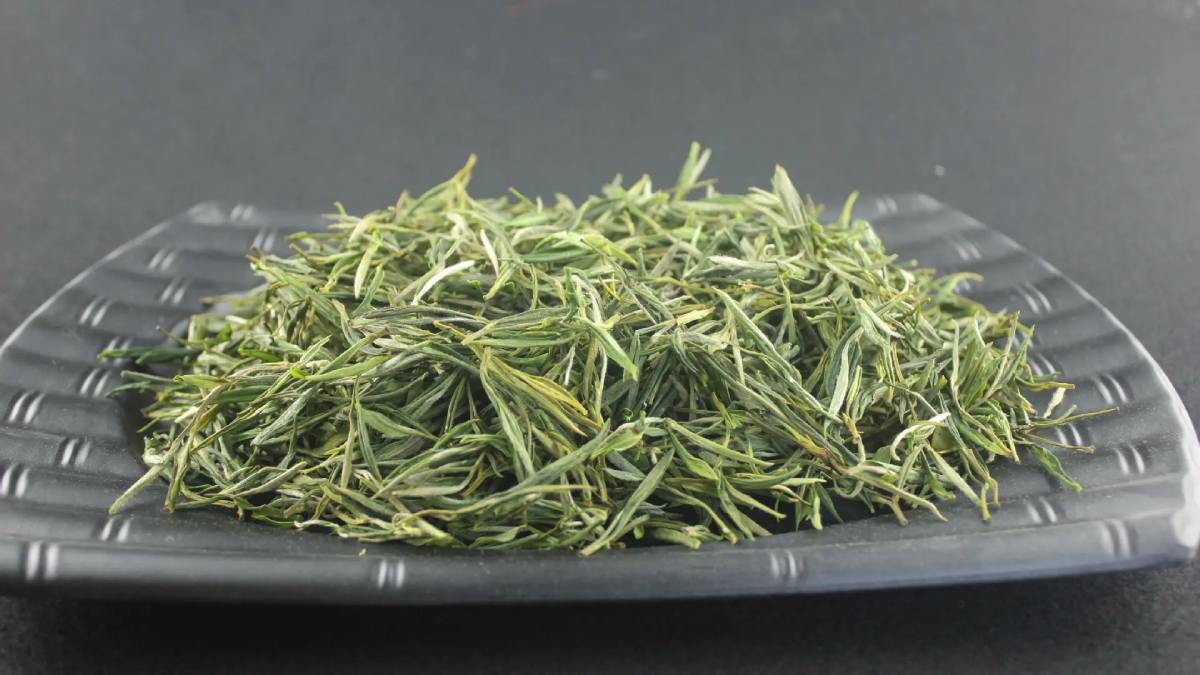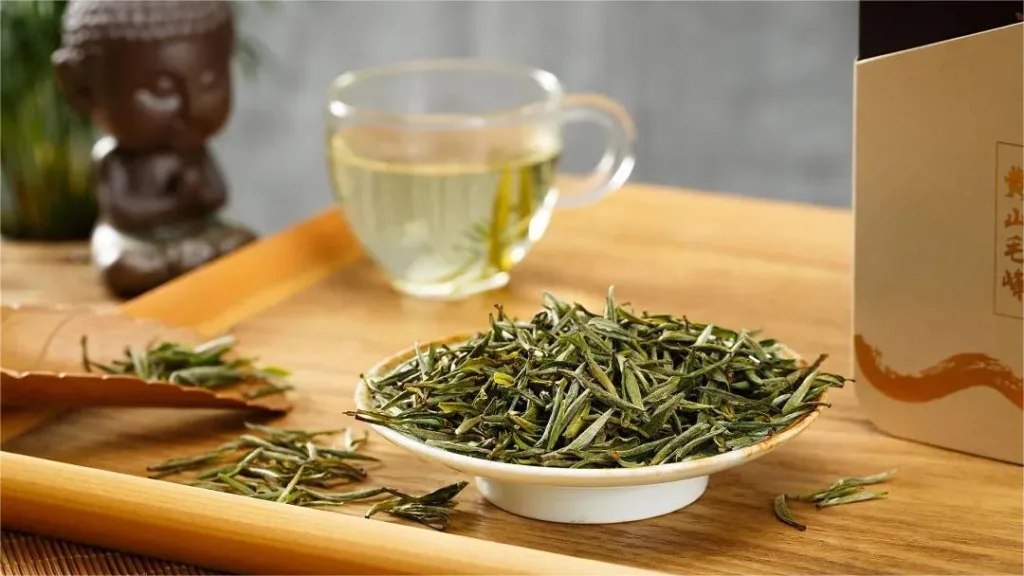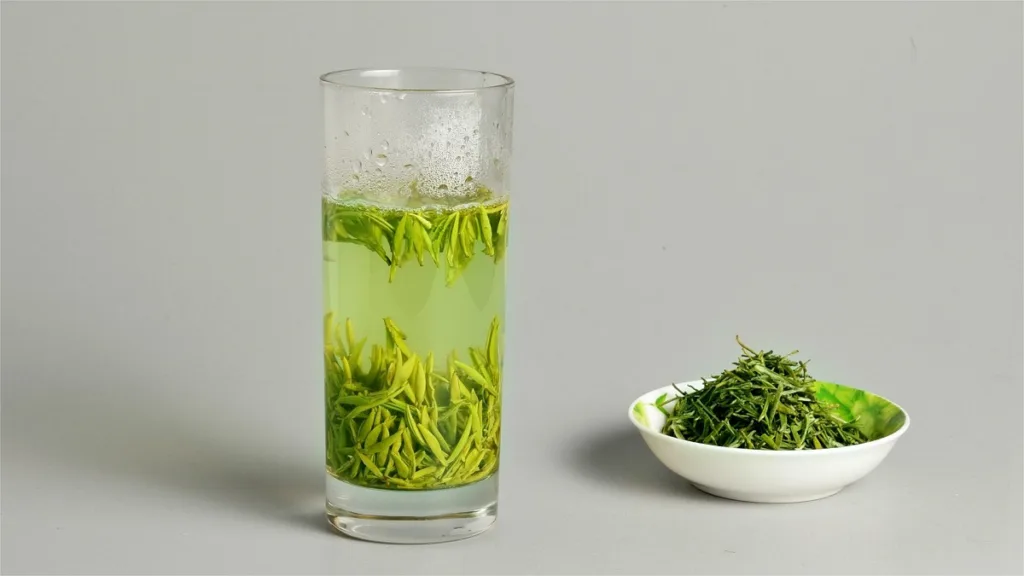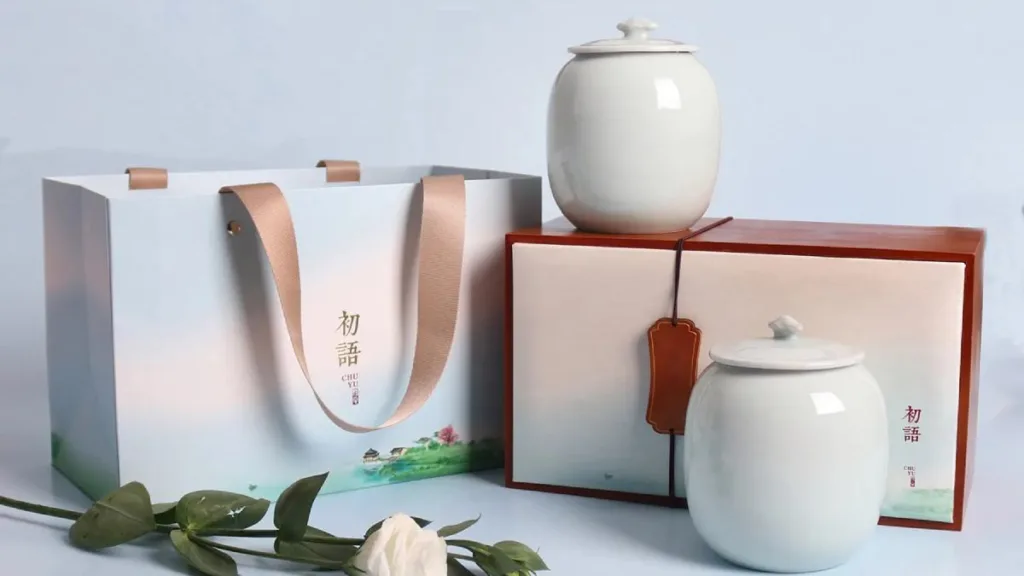Huangshan Maofeng, also known as “Yellow Mountain Fur Peak,” stands as one of China’s top ten renowned teas and belongs to the family of green teas. This tea is indigenous to the region surrounding Huangshan in Anhui Province, hence its alternate name, Huicha, which is deeply rooted in this picturesque region. The origins of Huangshan Maofeng can be traced back to the reign of Emperor Guangxu during the Qing Dynasty, with its creation credited to the Xie Yuda Tea Plantation.
Each year, during the Qingming and Guyu (Grain Rain) periods, skilled hands select and pluck the tender, fat buds from cultivars such as “Huangshan Zhong” and “Huangshan Daye Zhong,” known as “Huangshan varieties.” These plucked buds are then meticulously hand-processed. The tea leaves are delicately rolled into a shape reminiscent of a sparrow’s tongue, presenting a vibrant green hue with golden tips, and even the treasured “golden leaves” (locally referred to as “Huangjin Pian”). When brewed, this tea reveals an enchanting mist at the top of the cup, boasting a clear, jade-like liquid with subtle hints of yellow. The leaves in the teapot or teacup dance with vitality, and the flavor is rich and sweet, with an aroma that resembles the scent of orchids, and a lingering aftertaste. The name “Huangshan Maofeng” finds its roots in the fact that the fresh tea leaves are adorned with white hairs, and the tea buds resemble mountain peaks, accentuating the significance of their origin.
History
The history of Huangshan tea dates back over 1,200 years to the flourishing Tang Dynasty. During this period, Shexian County was established during Emperor Yang’s reign in the Sui Dynasty. As dynasties changed, Shexian County was renamed Huizhou during the Tang Dynasty and became Huizhou Prefecture during the early Ming Dynasty. Huangshan Mountain is part of Shexian County and later Huizhou Prefecture. According to the “Chinese Tea Chronicles,” which quotes the “Huizhou Prefecture Annals,” “The production of tea in Huangshan began in the JiaYou era of the Song Dynasty and thrived in the Longqing era of the Ming Dynasty.” It further states, “The famous teas of the Ming Dynasty include Huangshan Yunwu, which is produced in Huangshan, Huizhou.”
The Japanese Zen monk Roushi Eiho wrote in his book “Eating Tea for Health,” “Huangshan tea is like an elixir for long life.” Additionally, the “Chinese Tea Chronicles” contain tales of a monk named Zhengzhi who had an association with tea, shedding light on the fame of Huangshan tea during the Ming Dynasty. During this period, the manufacturing process of Huangshan tea underwent significant improvements, leading to the development of a distinct and renowned tea that would later evolve into Huangshan Maofeng.
In the years around 1875, the creation of Huangshan Maofeng began, and it soon made its way to Shanghai, where British merchants praised its quality. “Xie Yuda Tea House” subsequently started mass processing of both foreign teas and a limited quantity of Huangshan Maofeng for export, earning the reputation of being “renowned in Europe for four to five years.” As Huangshan Maofeng made its way to the northeast, specifically Yingkou in Dongbei, it was sold under the name of “Xie Yuda Tea House,” gaining immense popularity before spreading throughout North China.
Brewing Method
The art of brewing Huangshan Maofeng tea is essential for unlocking its full flavor potential. To prepare a perfect cup, consider the following steps:
- The water temperature should be around 80°C, so use either a glass or white porcelain teacup. You can typically steep Huangshan Maofeng multiple times, usually 2-3 times.
- Pay attention to the tea-to-water ratio. It should be appropriate to ensure you can fully savor the tea’s color, aroma, and taste. The ratio typically used for green tea is 1:80, meaning 3 grams of tea leaves for every 240 milliliters of water. For a regular-sized teacup, 3 grams of tea leaves are suitable, while for a glass cup, 2 grams should suffice.
- Water temperature is crucial. Different teas require different water temperatures. In general, black, green, and oolong teas can be brewed with boiling water to allow the rapid extraction of their essential components. However, for some tender green teas like Huangshan Maofeng, it’s best to use water at temperatures between 80°C and 90°C. This will help maintain the tea’s vibrant green color, pure aroma, and smooth taste.
- Pay attention to steeping time. It usually ranges from 3 to 10 minutes. Steeping for too long can negatively impact the tea’s flavor and can even release substances that are less desirable. After placing the Huangshan Maofeng tea leaves in your teacup, start with a small amount of hot water to cover the leaves and then steep with the lid on for approximately 3 minutes. After that, add more hot water, filling the cup to about 70-80% full, and enjoy your tea while it’s hot.
- Huangshan Maofeng tea can be steeped multiple times. As a rule of thumb, when your teacup is one-third full, add hot water to maintain the appropriate tea concentration for successive infusions.
Health Benefits
Huangshan Maofeng is enriched with several beneficial compounds, including catechins, amino acids, proteins, vitamin C, and caffeine, among others. These components offer a range of health benefits:
- Reducing the Harm of Smoking: The presence of phenolic compounds in Huangshan Maofeng makes it effective in countering the harmful effects of smoking.
- Radiation Protection: The tea contains substances that help protect against the harmful effects of radiation, making it a great companion during screen time and prolonged electronic device usage.
- Gastrointestinal Comfort: Research has indicated that Huangshan Maofeng can aid in improving digestion and alleviating conditions such as acute diarrhea caused by bacteria.
- Blood Balance: The tea plays a role in maintaining the body’s normal acid-base balance in the blood. It contains caffeine, theobromine, and theophylline, which contribute to its alkaline properties.
- Anti-Aging: The tea’s high concentration of tea polyphenols, including catechins, provide strong antioxidant and physiological benefits that can counteract the effects of aging.
- Cardiovascular Health: Huangshan Maofeng’s tea polyphenols, particularly ECG and EGC, along with catechins, help inhibit arterial plaque formation and maintain clear arteries, reducing the risk of cardiovascular diseases.
- Diuretic Effect: The caffeine and theobromine in the tea possess diuretic properties, aiding in the treatment of edema and water retention.
- Atherosclerosis Prevention: The tea’s tea polyphenols and vitamin C assist in the prevention of atherosclerosis by improving blood clotting.
- Weight Management: Huangshan Maofeng can reduce the body’s lipid levels, enhance digestion, and help control weight by eliminating excessive oiliness in the digestive system.
In conclusion, Huangshan Maofeng offers much more than a delightful tea-drinking experience. It’s a testament to the rich history of Chinese tea culture, and its health benefits make it a valuable addition to a healthy lifestyle. Sip on this golden elixir and savor not only its exquisite taste but also the centuries of tradition and well-being that it brings to your life.



